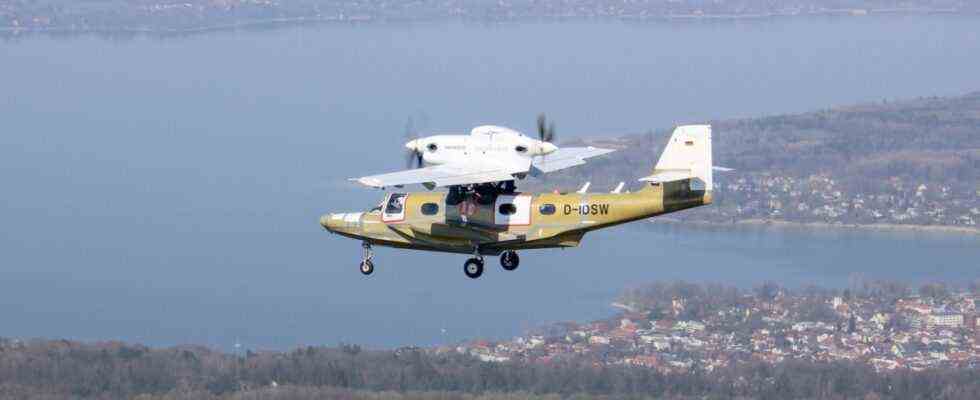Especially during the holiday season, many people enjoy the opportunity to sleep a little longer and have some peace and quiet in the morning. For Gabriele Schwaiger from Gilching, this was recently impossible when a loud small airplane flew by near her house at 8 a.m. on Thursdays and Fridays. “I flew out of bed. It was such a racket and it lasted for an hour,” she says angrily.
The machine is the new “Seastar” from the Oberpfaffenhofen-based aircraft manufacturer Dornier – and the Gilchinger was not the only resident who reported, explains engineer Simon Schell. The test flights continued. But the concern of many residents that there could now be regular noise is unfounded. Because the tests like the one over Gilching at a low altitude with many take-offs and landings have been completed. This was followed by flights at higher altitudes, which were further expanded regionally. They made less noise.
The reason for the loud flights were calibrations – the instruments are checked, so to speak. The required measurements were made through a calibrated reference ground station at the special airport in Oberpfaffenhofen, which is why the aircraft had to take off and land there more often three weeks ago. The time of day of the flights in the early morning, which caused a lot of trouble, could not be avoided. Calm weather conditions are of great importance, which is why the off-peak times, for example at 8 a.m., are ideal.
Claudius Dornier Jr. had the first prototype of the twin-engine amphibious aircraft. designed in the 1980s. In 2013 the company formed a joint venture with two Chinese state-owned companies under the name Dornier Seawings and further developed the prototype of the vehicle. The Seastar completed its maiden flight last year and has a provisional traffic permit, which also includes a noise permit, explains Simon Schell. All requirements such as the permitted flight times and altitudes have been complied with.
“It’s a very special aircraft. Nobody else builds it,” says Schell. The special feature of this type of construction is, on the one hand, that the machine can start from land as well as from water and also land on both. This is particularly important in countries with many islands such as Greece, Sweden or Indonesia. The engineer explains that the environmental aspect is very important. Many islands still don’t have a lot of infrastructure. For example, forests would have to be cleared to make space for runways. That is no longer necessary with an amphibious aircraft. The only alternatives are ships, which are often slow, and helicopters, whose landing and take-off technology is not energy efficient. “The areas of application are diverse. The aircraft can be used for sea rescue, tourist connections, cargo flights, research flights and much more,” says Schell. Another advantage is the fiber composite material used, which does not rust and reduces maintenance costs.
The volume is due to the construction, explains engineer Schell. The engines are not next to each other as in other aircraft, but behind one another. This makes it easier for the pilot to steer the aircraft if an engine should fail, since there is no torque that has to be compensated.
The technical finesse cannot comfort Gabriele Schwaiger: “It is astonishing anyway that aircraft with such a noise development are still allowed to be built,” she wrote to Dornier. “We were bombarded with complaints,” confirmed Rudolf Ulrich, chairman of the Society against Aircraft Noise from Gilching. He had recently denounced that, especially during the holiday season, many aircraft from the special airport Oberpfaffenhofen headed for holiday destinations – the Maldives, Mallorca or Malaga. “Lately, the planes have been arriving every ten minutes. It’s like a sea of noise. And then it’s simply the special individual events that bring the residents to the barricades.”

